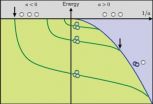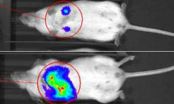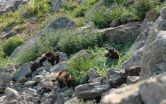(Press-News.org) From AGU's blogs: Earthquake rupture through a U.S. suburb
Observations and mapping by seismologists at the University of California Davis in the hours and days after the August 24 earthquake in northern California are helping scientists understand why the earthquake caused so much damage in the region, according to a post in The Trembling Earth blog, hosted by the American Geophysical Union.
From this week's Eos: Future Mars Rovers: The Next Places to Direct Our Curiosity
Selecting where the next Mars rovers will land involves a series of open-invitation workshops that solicit input from the scientific community. Think of the selection process as the science fair to end all science fairs, where the scientists who volunteer their time are rewarded with new data on their favored locales on Mars.
From AGU's journals: Models of ozone changes do not agree with real measurements
Ozone (O3), an important component of the Earth's atmosphere that is created by both natural and man-made processes, is a greenhouse gas, contributing to climate warming. Modeling the changes in concentrations of greenhouse gases, including O3, helps scientists project the effects of these gases in the future. However, some scientists have raised questions about the accuracy of long-term trends of ground-level O3 calculated by models, prompting Parrish et al. to take a closer look.
The authors looked at three model calculations of O3 concentrations, focusing on their changes over the last several decades. They then compared these model calculations with actual measurements taken by ground- and air-based instruments over the same time period.
The authors find that the models significantly underestimated the change in lower troposphere O3 at northern midlatitudes over the last five to six decades, implying that its contribution to radiative forcing may currently be higher than previously thought. These disagreements, the authors note, indicate that "limited confidence" can be placed on current estimates of radiative forcing by O3 and that resolving the discrepancies will improve scientists' ability to predict O3 concentrations in the future.
INFORMATION:
Click here for the online version of This Week From AGU.
Click here to register for access to AGU journal papers and Eos, the newspaper of the Earth and space sciences.
The American Geophysical Union is dedicated to advancing the Earth and space sciences for the benefit of humanity through its scholarly publications, conferences, and outreach programs. AGU is a not-for-profit, professional, scientific organization representing more than 62,000 members in 144 countries. Join our conversation on Facebook, Twitter, YouTube, and other social media channels.
This week From AGU: California earthquake, future Mars rovers, models underestimate ozone
2014-09-02
ELSE PRESS RELEASES FROM THIS DATE:
‘Prepped’ by tumor cells, lymphatic cells encourage breast cancer cells to spread
2014-09-02
Breast cancer cells can lay the groundwork for their own spread throughout the body by coaxing cells within lymphatic vessels to send out tumor-welcoming signals, according to a new report by Johns Hopkins scientists.
Writing in the Sept. 2 issue of Nature Communications, the researchers describe animal and cell-culture experiments that show increased levels of so-called signaling molecules released by breast cancer cells. These molecules cause lymphatic endothelial cells (LECs) in the lungs and lymph nodes to produce proteins called CCL5 and VEGF. CCL5 attracts tumor ...
Cool calculations for cold atoms
2014-09-02
Chemical reactions drive the mechanisms of life as well as a million other natural processes on earth. These reactions occur at a wide spectrum of temperatures, from those prevailing at the chilly polar icecaps to those at work churning near the earth's core. At nanokelvin temperatures, by contrast, nothing was supposed to happen. Chemistry was expected to freeze up. Experiments and theoretical work have now show that this is not true. Even at conditions close to absolute zero atoms can interact and manage to form chemical bonds.
Within this science of ultracold ...
Enzyme controlling metastasis of breast cancer identified
2014-09-02
Researchers at the University of California, San Diego School of Medicine have identified an enzyme that controls the spread of breast cancer. The findings, reported in the current issue of PNAS, offer hope for the leading cause of breast cancer mortality worldwide. An estimated 40,000 women in America will die of breast cancer in 2014, according to the American Cancer Society.
"The take-home message of the study is that we have found a way to target breast cancer metastasis through a pathway regulated by an enzyme," said lead author Xuefeng Wu, PhD, a postdoctoral researcher ...
Study links sex hormone levels in the blood to risk of sudden cardiac arrest
2014-09-02
LOS ANGELES (Sept. 2, 2014) – Measuring the levels of sex hormones in patients' blood may identify patients likely to suffer a sudden cardiac arrest, a heart rhythm disorder that is fatal in 95 percent of patients.
A new study, published online by the peer-reviewed journal Heart Rhythm, shows that lower levels of testosterone, the predominant male sex hormone, were found in men who had a sudden cardiac arrest. Higher levels of estradiol, the major female sex hormone, were strongly associated with greater chances of having a sudden cardiac arrest in both men and women. ...
UO-Berkeley Lab unveil new nano-sized synthetic scaffolding technique
2014-09-02
EUGENE, Ore. -- Scientists, including University of Oregon chemist Geraldine Richmond, have tapped oil and water to create scaffolds of self-assembling, synthetic proteins called peptoid nanosheets that mimic complex biological mechanisms and processes.
The accomplishment -- detailed this week in a paper placed online ahead of print by the Proceedings of the National Academy of Sciences -- is expected to fuel an alternative design of the two-dimensional peptoid nanosheets that can be used in a broad range of applications. Among them could be improved chemical sensors ...
Microphysiological systems will revolutionize experimental biology and medicine
2014-09-02
The Annual Thematic issue of Experimental Biology and Medicine that appears in September 2014 is devoted to "The biology and medicine of microphysiological systems" and describes the work of scientists participating in the Microphysiological Systems Program directed by the National Center for Advancing Translational Sciences (NCATS) of the National Institutes of Health (NIH) and funded in part by the NIH Common Fund. The Defense Advanced Research Projects Agency (DARPA) and the Food and Drug Administration (FDA) are collaborating with the NIH in the program. Fourteen of ...
An uphill climb for mountain species?
2014-09-02
A recently published paper provides a history of scientific research on mountain ecosystems, looks at the issues threatening wildlife in these systems, and sets an agenda for biodiversity conservation throughout the world's mountain regions.
The paper, "Mountain gloom and mountain glory revisited: A survey of conservation, connectivity, and climate change in mountain regions," appears online in the Journal of Mountain Ecology. Authors are Charles C. Chester of Tufts University, Jodi A. Hilty of the Wildlife Conservation Society, and Lawrence S. Hamilton of World Commission ...
Sabotage as therapy: Aiming lupus antibodies at vulnerable cancer cells
2014-09-02
New Haven, Conn. — Yale Cancer Center researchers may have discovered a new way of harnessing lupus antibodies to sabotage cancer cells made vulnerable by deficient DNA repair.
The findings were published recently in Nature's journal Scientific Reports.
The study, led by James E. Hansen, M.D., assistant professor of therapeutic radiology at Yale School of Medicine, found that cancer cells with deficient DNA repair mechanisms (or the inability to repair their own genetic damage) were significantly more vulnerable to attack by lupus antibodies.
"Patients with lupus ...
Seatbelt laws encourage obese drivers to buckle up
2014-09-02
CHAMPAIGN, Ill. — Obesity is associated with many health risks, including heart disease and diabetes, but University of Illinois researchers have found a possible way to mitigate one often-overlooked risk: not buckling up in the car.
A new study led by Sheldon H. Jacobson, a professor of computer science and of mathematics, found that increasing the obesity rates are associated with a decrease in seatbelt usage. However, these effects can be mitigated when seatbelt laws are in effect.
"Primary seatbelt laws lead to increased use of seatbelts," Jacobson said. "On the ...
Melatonin does not reduce delirium in elderly patients having acute hip surgery
2014-09-02
Melatonin supplements do not appear to lessen delirium in elderly people undergoing surgery for hip fractures, indicates a new trial published in CMAJ (Canadian Medical Association Journal)
Many older patients in hospital experience delirium, with disturbances in their sleep–wake cycle. Antipsychotic medications used to reduce symptoms have serious adverse effects, leading the US Food and Drug Administration to warn against their use. Benzodiazepines are also used, although they are known to cause or aggravate delirium. A lack of melatonin may be one factor underlying ...



